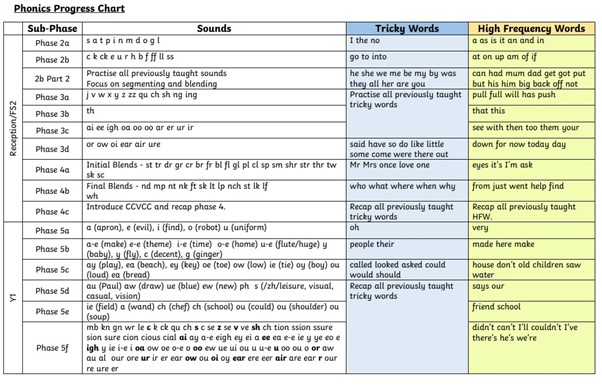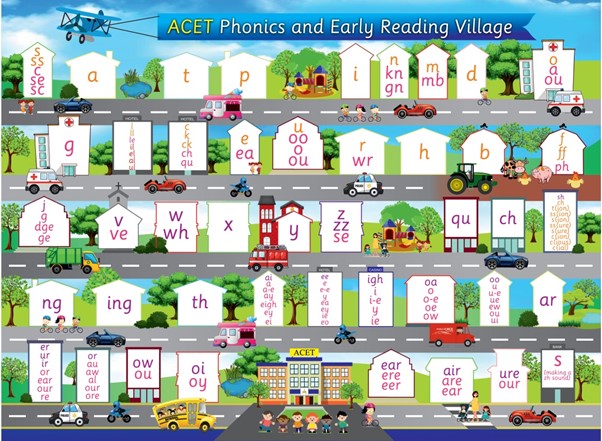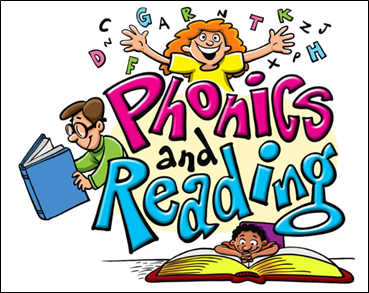Phonics
Intent
At Springwood Junior Academy, reading is at the heart of our curriculum as we passionately believe reading is the key to a child’s success and we aim for all our pupils to reach their full potential. From the start of their learning journey with us, we encourage our pupils to develop a love of reading. They are exposed to high quality texts and through a consistent approach to the teaching of phonics, they are provided with the skills they need to decode confidently.
We aim for all our pupils to become enthusiastic, fluent and confident readers regardless of their background, needs or abilities. Pupils receive rapid and targeted intervention if they need support to meet age-related expectations. This provides them with the necessary tools to become successful, independent readers.
Implementation
Overview of phonics scheme
At Springwood Junior Academy we follow the ACET Phonics and Early Reading Programme. This is a validated systematic synthetic programme that was developed by experienced teachers and Phonics Leads across the trust and in collaboration with English Hub. The ACET programme is ambitious and has been designed to continually consolidate previously taught phonics while pupils are acquiring new knowledge. This overlearning approach ensures pupils have a secure knowledge of all phonemes and sight words to then apply independently when reading and writing.
The ACET Phonics and Early Reading Programme has been divided up into six clear phases. Additionally, each phase has then been divided into sub-phases. Pupils begin Phase 1 activities in FS1 (Nursery) and the vast majority of pupils will have completed Phase 5F by the time they leave Year 1. Pupils then access phase 6 (spelling patterns) in Year 2 alongside the development of reading fluency and comprehension.


Lesson structure
At Springwood we understand that pupils learn best when there is consistency and familiar routines in place. From FS2 (Reception), when formal phase 2 phonic lessons begin, the phonics lessons follow a consistent structure from phase 2 to the end of phase 5. This is essential for developing their confidence in phonics and application to wider curriculum learning. We follow the structure of revisit, teach, practise and apply.
Assessment for learning (AFL) takes place throughout the lesson. Any misconceptions of pronunciation, reading and spelling with GPCs are addressed with instant feedback. This assessment also informs the revisit section of future lessons.
Assessment
Assessment is a fundamental part of the ACET Phonics Scheme. Upon entering FS2 all pupils are baselined using the phase assessment. Phase assessments are then completed, one-to-one, at least every half term. These assessments allow our practitioners to establish which sub-phase each pupil needs to learn, what gaps they have to fill and what book they should take home. The phase assessments are divided into the sub-phases and assesses the pupil’s ability to - recognise sounds, read words containing certain sounds, read tricky and high frequency words and read sentences. They also allow staff to gauge each pupil’s level of fluency. Once the phase assessments have been completed, this information is used to ‘stream’ the pupils into specific phonics groups. This means a pupil is placed in a specific group relevant to their need rather than their year group. Groups are based upon what the pupil needs to learn next ensuring that the lessons target each pupils’ specific needs.
Intervention
For any pupil working below the age related expectations of the programme’s overview, interventions are quickly implemented. Below is an outline of each of the interventions and their purpose.


Home Reading
Pupils accessing phonics lessons or phonics interventions will reinforce their reading at home through fully decodable phonics books, in line with what they are learning and accessing in their phonics sessions. This gives the pupils the opportunity to practice what they have been learning in school.
Springwood Junior Academy’s main focus is to improve reading by developing the pupil’s fluency (reading accurately without lots of sounding out), therefore pupils will only have their book changed once per week. This will allow them to become fluent and confident in what they are reading.
If a pupil is reading a phonics book, then please be aware that they should be able to read 100% of the book using the phonics they have been taught. This may appear as ‘easy’, but this is to aid fluency and give them the chance to practice what they have been learning. When hearing your child read at home, check the inside cover for any words they need to be taught before they begin.
Any words or sounds that pupils need to practise following a phase assessment will be recorded in planners in order for these words to be practised at home.
Impact
Through the consistent, systematic and daily teaching of the ACET Phonics and Early Reading Programme, our aim is for pupils to become fluent, confident readers by the end of Key Stage One. Pupils are assessed at the end of Year 1 using a Government Statutory Assessment Tool known as the Phonics Screening Check. This screening check confirms whether a pupil has reached the appropriate standard in word decoding and will identify sounds needing further support in Year 2. The pupils are assessed one to one by the phonics and early reading lead, who is a familiar adult to them. Those who do not pass the screening will continue their phonics lessons and learning in Year 2 continuing to be streamed into the correct group to target their specific learning needs. This allows for them to consolidate and develop their confidence, within a group aimed at their specific ability, ready to retake the screening at the end of Year 2.
Through the ACET Phonics and Early Reading Programme, pupils will be equipped with the skills to decode unfamiliar words using strategies that they have been taught in their daily lessons. This way, pupils can focus on developing their fluency and comprehension as they move through school. This will lead to a love of reading and pupils taking pleasure in exploring the rich literary world around them with a firm phonic basis to support them.
Phonics Information Presentation for parents
This video contains an overview of phonics at Springwood.
Useful Videos to support parents
What is the Phonics Screening Check?
What are alien words and why do we read them?
